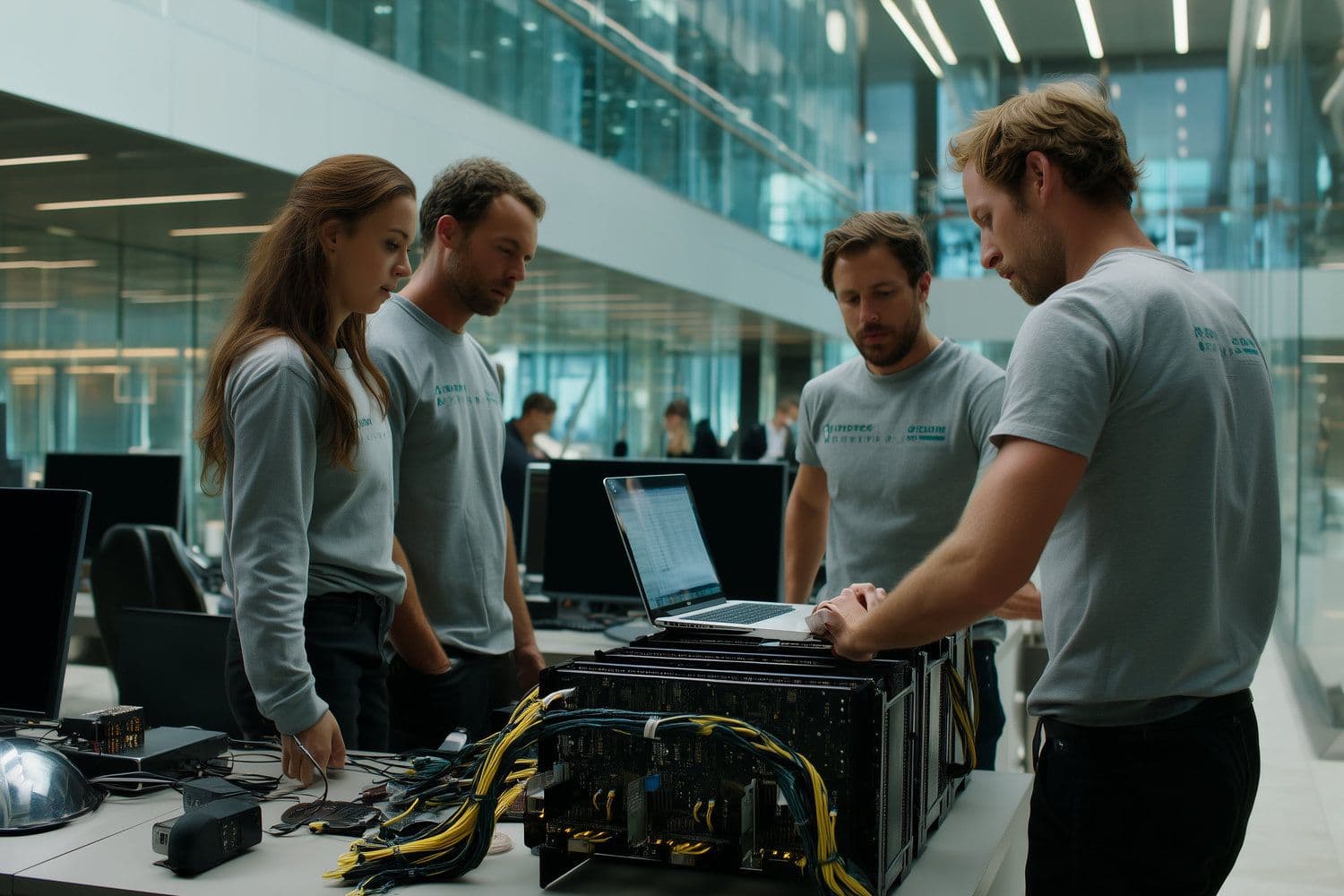The Bitcoin network has achieved an unprecedented computational milestone, surpassing 1 Zetahash per second (ZH/s) for the first time in its 16-year history, according to multiple blockchain data trackers.
What to Know:
- Different tracking services report the milestone was reached between March 24 and April 5
- This represents a 1,000-fold increase since Bitcoin first reached 1 Exahash in January 2016
- The achievement comes amid a sharp market downturn with Bitcoin falling nearly 10% over four days
Mempool.space data indicates Bitcoin's hashrate peaked at 1.025 ZH/s on April 5, while BTC Frame recorded a 1.02 ZH/s reading one day earlier. Coinwarz reported an even higher figure, showing the network reaching 1.1 ZH/s on April 4 at block height 890,915, though their data suggests the milestone was initially crossed on March 24. The network's computational power has since retreated below 0.95 ZH/s as of April 7, according to BTC Frame.
The discrepancies between trackers stem from their different methodological approaches to calculating hashrate. Variables include when block times and difficulty adjustments are measured, which Bitcoin nodes and mining pools are sampled, and other technical factors that influence calculations.
Bitcoin cypherpunk Jameson Lopp previously noted that even minor methodological differences, such as using one "trailing block" versus five blocks for estimation, can result in hashrate variations exceeding 0.04 ZH/s.
"Viewing the raw Hashrate metric can be deceiving due to random variations in block times," Blockware Solutions head analyst Mitchell Askew told Cointelegraph. He emphasized that Bitcoin's 30-day moving average hashrate remains around 0.845 ZH/s, suggesting the 1 ZH/s readings represent peak values rather than sustained performance.
Network Security and Mining Landscape
Despite measurement variations, reaching 1 ZH/s represents a significant achievement for the Bitcoin network's security posture. The unprecedented computational power makes the network more resistant to attacks than ever before, virtually eliminating the possibility of a 51% attack by malicious actors.
The rise to 1 ZH/s—equivalent to 1,000 Exahashes per second—demonstrates exponential growth since late January 2016, when Bitcoin first achieved 1 EH/s. For perspective, Litecoin, the second-largest proof-of-work cryptocurrency network, currently operates at 2.49 Petahashes per second according to Coinwarz data. This makes Bitcoin's network approximately 40,000 times more computationally powerful than its nearest proof-of-work competitor.
Askew noted that the dramatic increase in hashrate correlates directly with the expansion of commercial Bitcoin mining operations in recent years.
"Miners are doubling down: expanding sites and plugging in more efficient machines," he explained, while cautioning that less efficient mining operations could face elimination unless Bitcoin's price experiences another significant rally in coming months.
The mining landscape is increasingly dominated by large corporate entities. MARA Holdings currently leads Bitcoin mining operations with more than 50 EH/s of computing power. Meanwhile, Foundry USA Pool and AntPool channel the largest shares of hashrate among Bitcoin mining pools, according to Hashrate Index data.
At least 24 publicly traded companies now operate Bitcoin mining hardware, according to CompaniesMarketCap.com. Other major contributors to the network's hashrate include Riot Platforms, Core Scientific, CleanSpark, Hut 8 Mining, and TeraWulf.
Market Conditions and Economic Context
The network's computational breakthrough arrives during a period of significant market turbulence. Bitcoin has fallen nearly 10% over the past four days to $78,750, coinciding with a broader market selloff. U.S. stocks experienced an estimated $6.6 trillion loss on April 3 and 4—the largest two-day decline in history.
Market analysts largely attribute the downturn to U.S. President Donald Trump's proposed tariff plans, which have intensified recession fears across various industry sectors. These economic concerns have spilled over into cryptocurrency markets despite Bitcoin's technical achievement.
The contrast between Bitcoin's strengthening network fundamentals and its declining market price highlights the complex interplay between technological development and market sentiment in the cryptocurrency ecosystem.
Closing Thoughts
Bitcoin's achievement of 1 Zetahash per second represents a watershed moment for the network's development and security. Despite measurement inconsistencies between tracking services, this milestone underscores the massive computational resources now dedicated to securing the world's largest cryptocurrency network, even as market conditions remain volatile.

